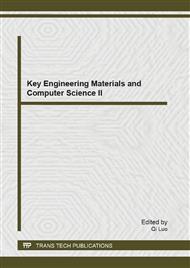p.749
p.754
p.760
p.766
p.772
p.778
p.784
p.789
p.794
Intra and Inter Language Control for French to Arabic Machine Translation in the Security Domain
Abstract:
The TACCT (Traduction Automatique Contrôlée Centre Tesnière) system architecture draws its strength from two main areas governed by microsystemic theory due to Sylviane Cardey: controlled language and contrastive linguistics. In this approach where the French and Arabic languages are brought close together by using a comparison of the two linguistic systems and control of the respective languages, the most appropriate approach seems to be unquestionably the microsystemic one. This is because the microsystemic approach is able to address the particular needs of each language considered by the system. The microsystemic approach decomposes the whole system into dynamic subsystems, unknown at first, their boundaries being dependent on the architecture of the machine translation system. The resulting fragmentary nature of the microsystems is aimed at apprehending the whole language with a detailed analysis of each of its constituent components and at the same time formalizing the nature of interactions between them. The syntactic-semantic model adopted for Machine Translation in the TACCT system is therefore the result of this new two-faceted approach based on both the study of divergences and convergences between French and Arabic conducted on a large bilingual safety corpus and also on an intra-and inter-language control-oriented analysis. Because of this we distinguish in our research between different types of control: static control and dynamic control.
Info:
Periodical:
Pages:
772-777
Citation:
Online since:
July 2013
Authors:
Price:
Сopyright:
© 2013 Trans Tech Publications Ltd. All Rights Reserved
Share:
Citation:


